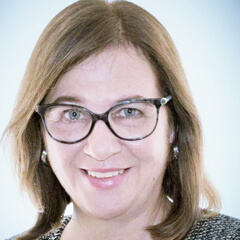Remote Audits and Inspections May Be Here to Stay: PDA’s Task Force Aims to Help
As a result of travel restrictions and other precautions taken in response to the COVID-19 pandemic, some health authorities dramatically increased their use of remote methods to inspect pharmaceutical and biopharmaceutical manufacturers in 2020. Likewise, manufacturers turned to remote tools to conduct supplier and internal audits. Each was forced to either delay audits and inspections or to shift from on-site to remote audits/inspections, whether as paper-based “desktop” assessments or virtual assessments using online communication platforms.
As PDA members rapidly pivoted to remote assessments, numerous questions and technological issues arose. In response, PDA formed a Remote Audits and Inspections Task Force. The 27 international members of the Task Force represent the auditor, auditee, inspected site, and consultant perspectives, and their employers range from large multinational corporations to smaller regional manufacturers.
Some of the remote audit and inspection practices developed as a result of COVID-19 travel restrictions are likely to be useful moving forward, as they may allow for more comprehensive oversight and for optimal use of resources, based on risk. They offer other advantages, as well, including the reduction in costs and travel burdens. While on-site inspections and audits will continue to be necessary and may be the optimal way to assess compliance, remote inspections and audits also allow for increased involvement of specialized experts to support specific aspects of the assessment in a way that has not traditionally been possible on-site.
Continued use of remote tools for inspections and audits requires confidence that the process can efficiently and effectively provide thorough and reliable information. Active feedback following a remote audit, for example, can be a critical input in the risk-based determination of the next scheduled audit type. While good planning and preparation by both parties are important for any inspection or audit, they are especially critical in the remote setting. Communication challenges and cultural misunderstandings can be heightened in the remote setting. The effects of computer fatigue and time zone differences also must be considered in the planning.
The PDA Remote Audits and Inspections Task Force has taken several steps to help members of industry and regulators alike with three important offerings this year: the “2021 PDA Remote Audits and Inspections Workshop,” held on 8 Apr. 2021, and two Points to Consider documents, which will publish soon.
The Task Force’s two Points to Consider documents describe best practices that will help sites respond efficiently and avoid unnecessary or unexpected delays, stressors, or complications in the remote inspection or audit process. These documents aim to fill gaps in understanding how best to prepare for and perform remote inspections and audits, and how the outcomes of these audits/inspections compare with those of on-site assessment.
The first, Points to Consider in Remote and Hybrid GMP/GDP Inspections, is primarily directed at sites that are the target of regulatory inspections, but also will likely be useful to inspectorates. In addition to points on preparing for inspections, planning the technology and agenda, and responding to inspectors’ requests in the remote setting, it will include the complete results of a PDA survey about manufacturers’ 2020 remote inspection experiences and perspectives that the Task Force conducted in November 2020.
The second, Points to Consider in Remote and Hybrid Audits includes tips relating to the use of technology and changes to quality agreements. It also includes a risk-based assessment tool that can be used in assessing which type of audit (paper-based, virtual, hybrid, or on-site, as further defined below) is most appropriate in a particular circumstance. In addition, it discusses cultural and communication challenges that may especially impact remote communications, providing tools to help understand how and why.
The Task Force found that there is not a common global understanding of the terminology used to describe the remote assessment options; therefore, they developed the necessary definitions. The two Points to Consider documents use the following definitions, under which “desktop,” “virtual/distant,” and “hybrid” are all types of remote audits.
- GMP/GDP Inspection: Assessment of the compliance of a site with the applicable GMP/GDP regulations and filing commitments performed by officials of a competent (local/international) health authority.
- Audit: Process of conducting a systematic, impartial, and independent evaluation of systems and processes (including collection of evidence) to determine whether they comply with established standards/requirements, are implemented effectively, and are suitable to achieve and maintain a state of control and to drive process improvement.
- Remote Inspection/Audit: An inspection or audit for which the inspector/auditor is not physically present at the site(s) where the activities subject to the assessment take/have taken place. Remote inspections/audits may take several forms, including desktop, virtual, and hybrid.
- Desktop Inspection/Audit: A type of remote inspection/audit in which documentation is requested by an inspecting body/auditor that is not physically present at the site(s). Requests and responses to questions are shared in written form (e.g., via e-mail or on a document-sharing platform). There can be several iterations of the request and review of documentation, questions, and answers. Phone calls and videoconferences take place only rarely to provide clarification about the documents requested or provided.
- Virtual Inspection/Audit: In addition to sharing documentation as in any other remote inspection or audit, virtual inspections/audits utilize technologies such as live/real-time streaming video technology, screen-sharing functionalities, or other means of real-time communication. They may include virtual tours of aspects of the inspected/audited site. These inspections and audits also may be referred to as “distant” inspections/audits.
- Hybrid Inspection/Audit: An inspection/audit that is conducted remotely in part but also includes an in-person presence and on-site visit by the inspecting body/auditor. The remote and in-person aspects may be concurrent or at different times (e.g., a portion of the inspection/audit is virtual or desktop, followed by a second portion on site). The combination of remote and on-site components may be captured in one single inspection/audit report or in separate reports.
Inspectorates around the world continue to use diverse terminology, but standardization of terms within industry nonetheless will be useful and can improve communications.
The virtual Remote Audits and Inspections Workshop on 8 Apr. 2021 presented best practices for planning and participating in remote audits and inspections. The speakers have been involved in remote audits and inspections globally and included Ewan Norton, a Lead Senior GMDP Inspector from the British Medicines and Healthcare products Regulatory Agency. Attendees learned practical tips on such topics as applying a risk-assessment approach to planning and determining the scope of remote audits, identifying issues relating to cultural differences, mitigating communication challenges, and assessing technological tools.
The Task Force also presented two successful webinars in January. The first, Overcoming Challenges in Remote Auditing held on 13 Jan., featured three Task Force members as speakers: Bryan Wilson, GlaxoSmithKline, Ghada Haddad, PhD, Merck & Co., and Vishal Sharma, Vi’enni Training & Consulting LLP. They presented a remote audit case study, discussed the use of risk assessment in determining the appropriate format for an audit, and explained the use of the Hofstede Power Distance Index theory to understand cultural impacts on communications.
The second webinar, Effectively Using Technology in Remote Audits held on 27 Jan., featured Raghu Ram Pannala, PhD, Sciegen Pharma (a Task Force member), Peter Miller, Dynamic Compliance Solutions, Inc., and Prashant Sharma, Zydus Group. The webinar presented best practices and case studies in the practical use of technology. Miller’s live demonstration of the use of a 360-degree camera was a highlight of the session.
Both webinars were very well attended, with more than 500 total attendees for the two. The Task Force co-chairs moderated the webinars.



 Eva M. Urban is a quality professional with 25+ years of experience in operations and quality functions in the multinational biopharmaceutical industry, currently working as Director Quality Risk Management and Internal Audit, Global Quality, at CSL Behring. Eva is a member of PDA’s Regulatory Affairs and Quality Advisory Board.
Eva M. Urban is a quality professional with 25+ years of experience in operations and quality functions in the multinational biopharmaceutical industry, currently working as Director Quality Risk Management and Internal Audit, Global Quality, at CSL Behring. Eva is a member of PDA’s Regulatory Affairs and Quality Advisory Board. Tiffany Baker is a quality risk management and microbiology consultant with Concordia ValSource, LLC, specializing in development and implementation of innovative approaches to quality risk management and creating a risk-focused culture. Baker is a faculty member for PDA’s Training Research Institute.
Tiffany Baker is a quality risk management and microbiology consultant with Concordia ValSource, LLC, specializing in development and implementation of innovative approaches to quality risk management and creating a risk-focused culture. Baker is a faculty member for PDA’s Training Research Institute.